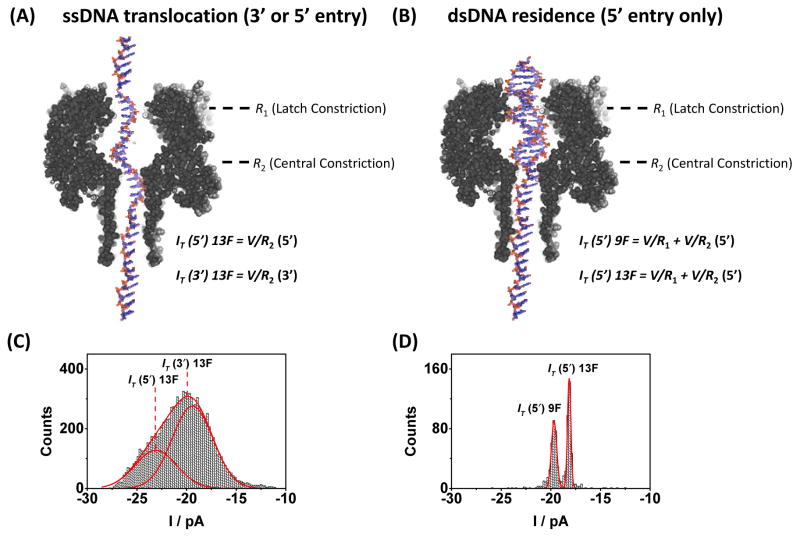FIGURE 2.
Relative contribution to the ion channel current during ssDNA translocation and dsDNA residence in 10 mM phosphate buffer (pH 7.5), 1.00 M KCl electrolyte at 25°C. (A) Structure of the αHL channel overlaid with a 41-mer heteropolymer. (B) Structure of the αHL channel and dsDNA prior to unzipping. Entry is by the 5′ end of the tail only. (C) The measured current (IT) for ssDNA translocation is largely determined by the resistance at the central constriction (R2) and is dependent on the direction of ssDNA entry. (D) For dsDNA residence, IT is a function of the resistance at both the latch constriction (R1) and the central constriction (R2). Moving the furan into the latch during unzipping (9F) reduces R1 and increases IT. Counts indicate either (C) the number of ssDNA translocation events or (D) the number of dsDNA unzipping events.

